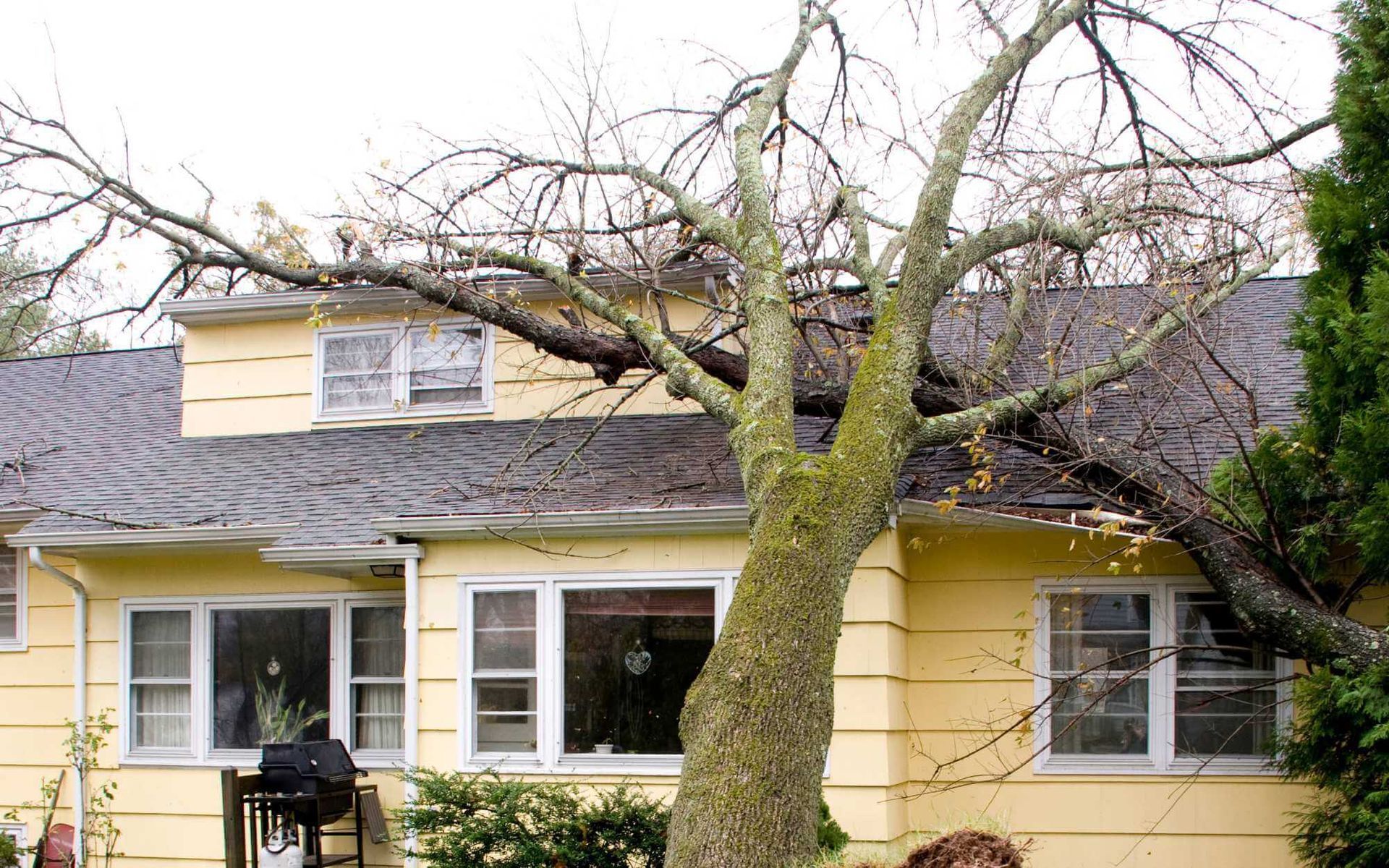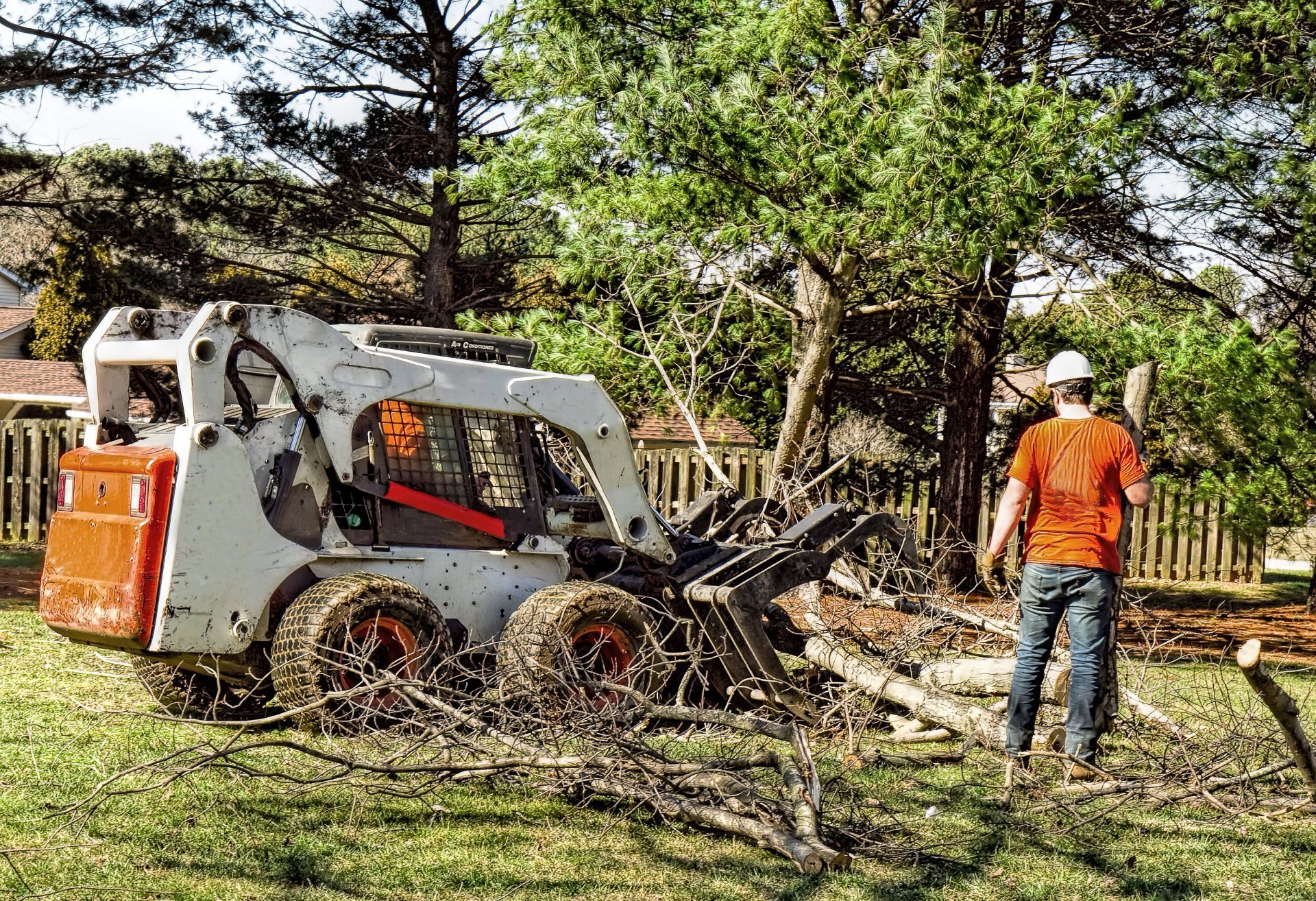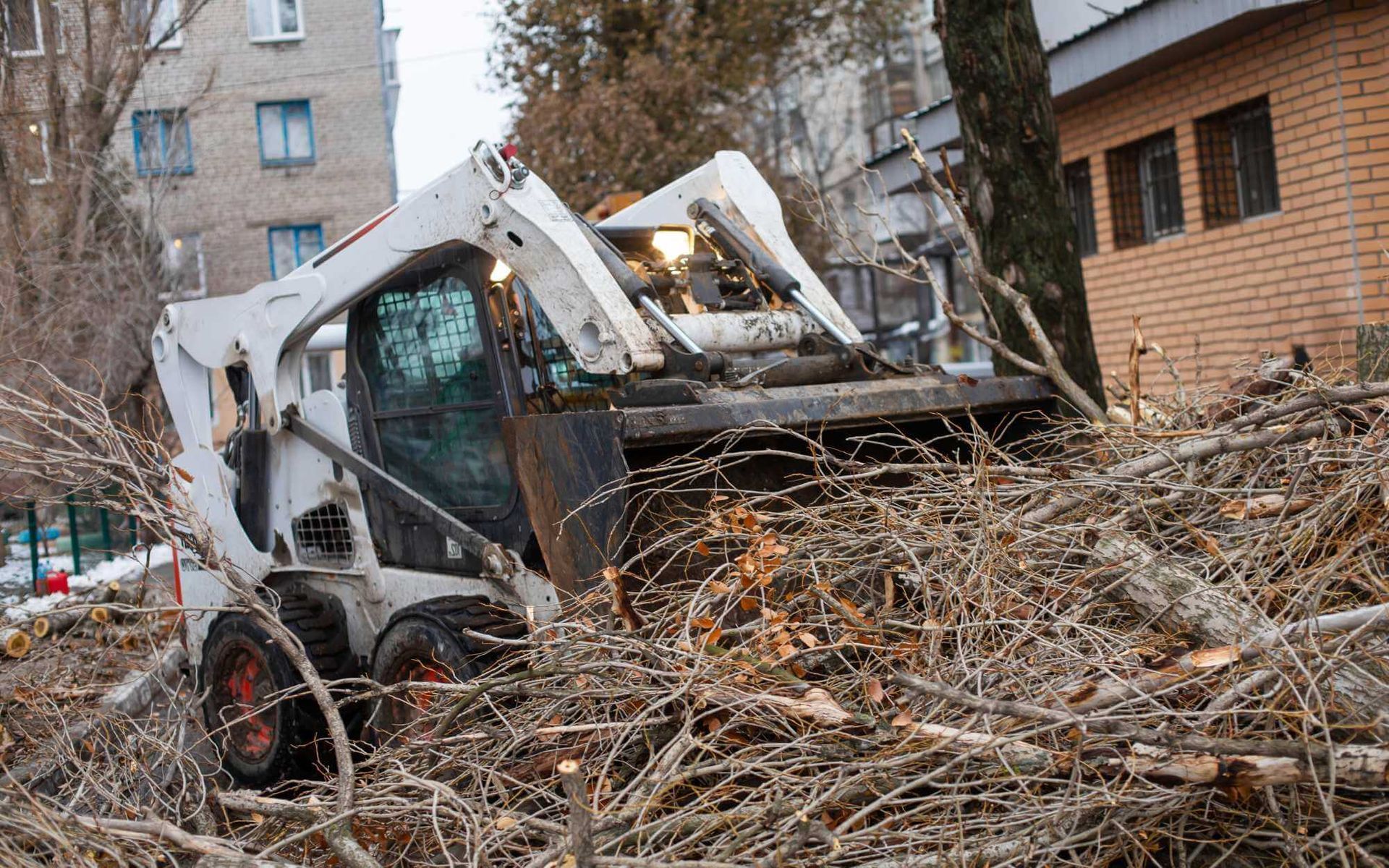Effective DIY Tips for Cleaning Up Storm-Damaged Trees
PUBLISHED ON
SHARE THIS ARTICLE

When storms sweep through our neighborhoods, they often leave a trail of destruction in their wake, with trees being one of the most affected elements in our landscapes.
High winds, torrential rain, and lightning can inflict significant damage, causing trees to lose branches, split, or even be uprooted entirely. The aftermath presents not only an unsightly mess but also potential safety risks.
In this blog, we will discuss some handy DIY tips to
clean up storm-damaged trees effectively, ensuring your yard returns to its pre-storm glory as quickly and safely as possible.
Step-by-Step Tree Cleaning Process

To guide you through your DIY tree removal, we have broken down the cleanup into ten simple steps:
- Ensure Tree Safety: Before you begin any clean-up work, ensure you are appropriately equipped. Wear sturdy boots, gloves, and safety glasses to protect yourself from potential hazards (e.g., trees leaning, downed power lines, etc.)
- Assess the Damage: Take a walk around your property to evaluate the extent of the storm's impact. Identify and prioritize severely damaged trees that might be a safety threat.
- Remove Debris: Start by removing twigs and smaller branches scattered around your yard. This step will help clear the area and make it easier to handle larger branches and tree trunks.
- Prune Broken Branches: Use a chainsaw or handsaw to cut off broken tree branches. Ensure your cuts are clean and smooth to facilitate the tree’s healing process.
- Tackle Large Branches and Trunks: For large fallen branches, you might need to cut them into smaller, more manageable pieces. Follow safety protocols when using power tools, and if the job looks too big, do not hesitate to call a professional.
- Address Stumps: If the storm has uprooted trees entirely, decide whether you want to grind the stump down or remove it completely. You might need to hire professional services for this task.
- Check for Tree Health: After clearing the debris, inspect trees for signs of stress or damage. Look for a split tree trunk, discolored leaves, or an unusual lean.
- Nurture Damaged Trees: Provide extra care to damaged trees by providing sufficient water, applying appropriate fertilizers, and regularly checking for signs of disease or pest infestations.
- Plan for the Future: Replant lost trees with species known to be resistant to storm damage. Consult with a local arborist or your extension service to find a suitable species for your region.
- Maintain Regularly: Regular maintenance can prevent severe storm damage. Prune your trees regularly, keep them in good health, and they'll be more resilient in future storms.
Additional DIY Tree Cleanup Tips

In addition to following the outlined steps, there are some extra considerations to keep in mind when tackling a DIY tree cleanup after a storm. These DIY tips for cleaning up storm-damaged trees can help you carry out the process more efficiently, minimize further tree damage, and ensure your safety during the cleanup.
- Use Proper Cutting Techniques: Avoid tearing the bark when cutting trees branches. Make an initial cut on the underside of the branch, followed by a top cut.
- Don't Over-Prune: While it may be tempting to remove as many hanging branches as possible, over-pruning can cause more harm than good. Leave as much of the tree's canopy as possible.
- Don't Top Trees: This harmful practice weakens tree structure. Instead, thin the canopy if necessary.
- Disinfect Tools: Disinfect your tools before and after each use to prevent the spread of tree diseases.
- Recycle Your Waste: Consider turning your tree debris into mulch or compost for your garden.
- Consult an Arborist: If you're unsure about a tree's health or safety, it's always best to consult with a professional arborist. They can provide advice and services that can save your trees or prevent potential hazards.
- Document the Damage: For insurance purposes, it can be helpful to take pictures of the storm damage before you start the cleanup process. This documentation can help with any potential claims.
- Stay Safe: Above all, ensure your safety throughout the cleanup process. If a task seems too dangerous or extensive for you to handle alone, don't hesitate to call in professional help.
Prepare for Storm-Damaged Tree Cleanup
Taking prompt action following a storm can reduce further damage to your trees and landscape. Remember, your safety is paramount; challenging cleanups should be left to professionals. In the face of nature's fury, your efforts can help preserve and restore your green spaces.
For complex tasks or professional advice, don't hesitate to contact our monster tree service. We're here to help make your
post-storm cleanup safe and efficient. Contact us today.
Want a free quote or some friendly advice? Call our team today:






